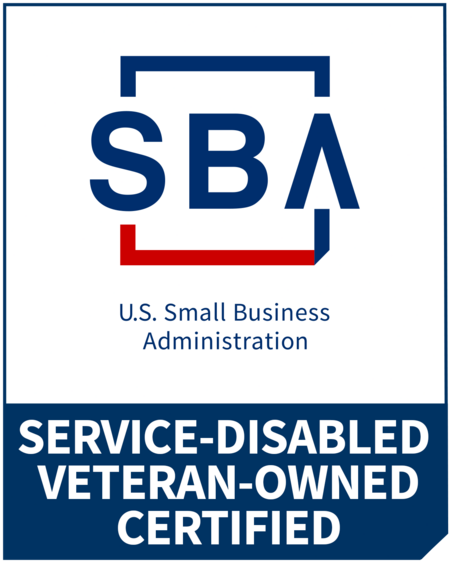Access Control
Understand the Differences Among POE vs. POE+ vs. POE++

Power over Ethernet (PoE) technology has revolutionized how we power and connect smart devices, including lighting and appliances, in commercial buildings. These standards have eliminated the need for traditional electrical cords by delivering power through Ethernet cables. If you’ve researched PoE technology, you might’ve come across the terms PoE, PoE+, and PoE++. Each "+" level represents an advancement in power delivery. We’ll take a look at the differences between PoE, PoE+, and PoE++ as well as discuss their applications.
What’s the Difference Between PoE, PoE+, and PoE++
PoE (Power over Ethernet) is a technology that enables electrical power and data to be transmitted over Ethernet cables simultaneously, obviating the requirement for electrical cords and data transmission cables. This lowers costs for both materials needed to deploy assets as well as the power consumption needed to run devices. This technology is widely used for various applications, including IP cameras, wireless access points, and, more recently, smart lighting and appliances. PoE+ (Power over Ethernet Plus) is an enhanced version of PoE, also known as IEEE 802.3at. It offers more power output compared to traditional PoE, making it suitable for devices with higher power requirements, such as pan-tilt-zoom (PTZ) cameras and video phones. PoE++ (Power over Ethernet Plus Plus) is the latest advancement in PoE technology, known as IEEE 802.3bt. It provides even more power, making it ideal for energy-intensive devices like high-performance access points, smart displays, and even some small appliances.
Differences Among PoE, PoE+, and PoE++
Take a look at the main differences among PoE, PoE+, and PoE++ standards.
Power Output
PoE can deliver up to 15.4 Watts per port. When you consider that an LED uses just 13 Watts to generate the same lumens as a 100-Watt incandescent bulb, you can see how PoE lighting can save your commercial building a ton of money on the connectivity alone.
PoE+ offers a substantial power boost, providing up to 30 watts per port, which is great for a larger light fixture.
PoE++ takes it a step further by delivering up to 60 or even 100 watts of power per port, depending on the device and configuration. This is where smart lighting can really make a difference in your commercial building with banks of lights and energy-efficient appliances.
Related Post: FAQs Answered: A Comprehensive Guide to POE Lighting Technology
Cable Requirements
PoE typically uses Category 5 (Cat5) or Category 5e (Cat5e) Ethernet cables.
PoE+ requires at least Cat5e cables, and Cat6 or better is recommended for optimal performance.
PoE++ needs Cat6 or higher to support the higher power demands.
You can think of PoE standards similar to data download and upload speeds. For work applications and word processing, a Cat5 Ethernet cable works just fine. However, if you’re streaming or gaming, a Cat6 or higher Ethernet cable can make your speeds faster.
Deployment Costs
PoE offers cost-effective solutions for devices with low power demands.
PoE+ has a slightly higher in cost but provides the power required for more demanding devices.
PoE++ is generally more expensive due to the increased power capabilities but is necessary for high-power applications.
Applications of PoE, PoE+, and PoE++
PoE
Security cameras and basic IP cameras with modest power requirements can be powered by PoE.
Basic access points with support or wireless access points with low power needs.
LED bulbs up to 15 Watts of power.
PoE+
PTZ cameras, or pan-tilt-zoom cameras, that require additional power for their movements and features.
Video phones over PoE+ can enable seamless communication.
PoE++
Smart displays, including high-resolution and interactive displays, are used in various applications such as digital signage.
Advanced access points and high-performance access points that handle a large number of connections.
Ceiling fans, at some point, will become part of a PoE++ or higher standard once these appliances have lower power consumption. Small ceiling fans consume about 75 Watts of power, which is the middle range for PoE++.
Choosing the Right PoE Standard
Selecting the appropriate PoE standard depends on your specific needs and the devices you plan to power and connect. When making your decision, consider the power requirements, device compatibility, and cable infrastructure of your application.
To ensure a reliable and efficient PoE system, follow these steps:
Determine power needs: Identify the power requirements of your devices. Do they fall within the range of PoE, PoE+, or PoE++?
Assess cable quality: Check the quality of your existing Ethernet cables or plan to install appropriate ones. Higher power standards like PoE++ may necessitate Cat6 or better cables.
Future-proofing: Consider potential future upgrades or additions to your network. Choosing a higher standard might be a wise investment to accommodate evolving technologies.
Consult a reliable vendor: Collaborate with a reputable PoE vendor to ensure that your infrastructure is correctly designed and implemented. Reliable vendors can provide expert guidance and high-quality PoE equipment.
Select a Reliable PoE Vendor
PoE, PoE+, and PoE++ enable the seamless integration of smart lighting and appliances into our homes and businesses. Understanding the differences between these standards is essential for making informed decisions about which one best suits your specific needs. Choosing a reliable PoE vendor is crucial to the success of your smart lighting and appliance projects. A reputable vendor will offer high-quality equipment and expert guidance to help you implement a PoE system that meets your requirements. The experienced team at CKC Data Solutions can assess your building’s current lighting infrastructure and give you an estimate for a cost-effective POE lighting system. Contact us or call (417) 812-5251 to discuss your requirements.
Latest Blog Posts
- Grid-Interactive Efficient Buildings: A National Security Strategy for a More Resilient Grid
- How GEBs & PoE Devices Can Reduce Energy Costs and Unlock Savings for Government Agencies
- Six Practical Reasons for Hiring a Managed IT Services Provider
- What Is a Managed IT Provider and Why Does a Business Need One?
- How to Retrofit Your Older Facility Into a Smart Building